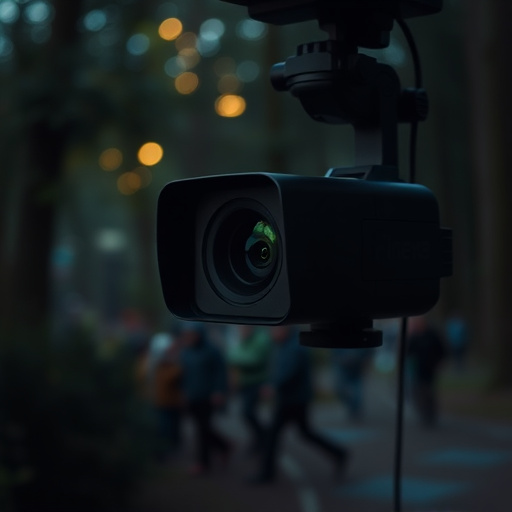Advanced hidden camera detection methods, including Hidden Nanny Cam Video Quality Comparison, leverage high-resolution video, audio anomalies, and electromagnetic sensing to identify visual and audio surveillance devices. Modern technologies offer superior resolution and night vision, making bug sweeping more effective than traditional methods. A multi-step security approach involving device audits, specialized tools, software, and AI devices safeguards homes from covert recording devices.
In today’s digital era, privacy concerns have led to an increase in sophisticated microphone bug sweeping detection techniques. This comprehensive guide explores the art of identifying hidden nanny cams, focusing on visual and audio detection methods. We delve into a detailed comparison of video quality between high-tech and traditional approaches, offering valuable insights for enhancing home security measures against stealthy surveillance devices.
- Understanding Microphone Bug Sweeping: A Comprehensive Guide
- Hidden Camera Detection: Visual vs Audio Techniques
- Comparing Video Quality: High-Tech vs Traditional Methods
- Home Security Measures: Preventing and Countering Bugs
Understanding Microphone Bug Sweeping: A Comprehensive Guide
Microphone bug sweeping, also known as audio surveillance, is a clandestine method used to detect hidden microphones or bugs within a space. It involves advanced techniques and technology to identify and locate these concealed devices, which can range from tiny cameras (often referred to as nanny cams) to sophisticated listening devices. The primary goal is to ensure privacy and security by uncovering potential hidden threats.
A comprehensive guide to microphone bug sweeping should cover various detection methods, including acoustic analysis, electromagnetic field sensing, and visual inspection using high-resolution cameras. For instance, a Hidden Nanny Cam Video Quality Comparison can highlight the effectiveness of different camera models in capturing evidence, with considerations on resolution, frame rate, and low-light performance. Understanding these aspects empowers individuals to safeguard their spaces from potential audio or visual surveillance.
Hidden Camera Detection: Visual vs Audio Techniques
Hidden camera detection has evolved beyond simple visual inspection, especially with the advancement in technology making tiny cameras more powerful and harder to spot. Traditional visual techniques, like carefully examining every corner and crevice for small devices, still hold value. However, modern approaches leverage both visual and audio cues for a more comprehensive sweep.
When it comes to hidden nanny cams, video quality comparison plays a crucial role. Analyzing the clarity and resolution of footage can reveal suspicious details, such as pixelation or unnatural blurring that might indicate compression from a covert camera. Audio techniques, on the other hand, focus on anomalies in sound patterns that could suggest a hidden microphone. These include listening for persistent background noise at odd times, sudden static bursts, or distorted sounds that may point to an active recording device. Combining both visual and audio assessments offers a robust method for detecting even the most sophisticated hidden cameras, ensuring safety and privacy in various settings.
Comparing Video Quality: High-Tech vs Traditional Methods
In the realm of bug sweeping, comparing video quality between high-tech methods and traditional techniques reveals a significant evolution. Modern hidden nanny cam technologies offer unparalleled clarity and detail, often featuring HD resolutions, night vision capabilities, and advanced motion sensors. These innovations allow for more precise and comprehensive detection, enabling users to identify even the smallest bugs or insects lurking in their homes.
In contrast, traditional methods rely on lower-resolution cameras and basic light sources, making it harder to discern minute details. The hidden nanny cam’s superior video quality serves as a game-changer, providing evidence that might otherwise remain unseen. This advancement not only enhances the overall bug sweeping process but also adds a layer of assurance for homeowners seeking effective pest control solutions.
Home Security Measures: Preventing and Countering Bugs
Home security is a top priority for many, and with the rise of advanced technology, protecting your space extends beyond traditional locks and alarms. One emerging concern is the potential for hidden microphone bugs, often referred to as “nanny cams,” which can compromise privacy and security. These tiny devices, sometimes disguised as everyday objects, are capable of recording audio and video of your activities without your knowledge.
To counter this modern threat, a combination of proactive measures is essential. Regularly inspecting electronic devices for any unusual activity or unknown apps is a good starting point. Additionally, consider investing in high-quality hidden nanny cam video quality comparison tools that can detect these bugs. Advanced video analysis software and AI-powered listening devices can also help identify potential hidden microphones, ensuring your home remains a safe and secure space.
Microphone bug sweeping detection has evolved significantly, incorporating advanced audio and visual techniques such as hidden camera detection and high-tech video quality analysis. While traditional methods remain effective, today’s digital era demands sophisticated solutions to counter increasingly sophisticated bugs. By understanding the intricacies of these devices and implementing robust home security measures, individuals can protect their privacy and peace of mind in an ever-vigilant world. A thorough examination of both hidden nanny cam video quality comparisons and audio-visual detection techniques is essential to staying one step ahead of potential intruders.
